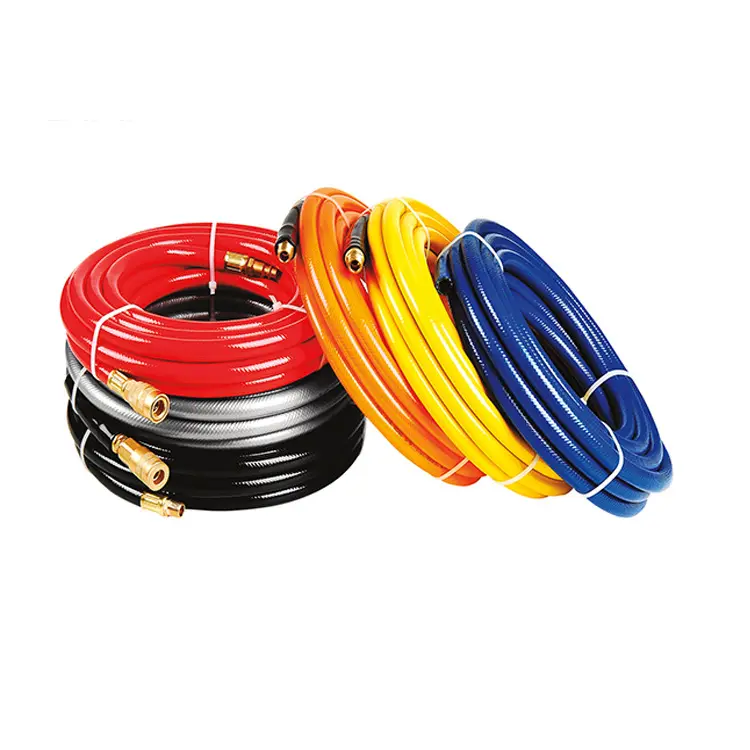Safe and Efficient Aluminum Foil Dryer Duct for Optimal Ventilation Performance
The Use of Aluminum Foil Dryer Ducts What You Need to Know
In the realm of home appliances, the dryer is a staple that adds convenience to our lives, allowing us to quickly dry our clothes. However, like any appliance, it requires proper installation and maintenance to operate efficiently and safely. One important aspect often overlooked is the type of ducting used to vent the dryer. Many homeowners may consider aluminum foil dryer ducts due to their cost-effectiveness and ease of installation. In this article, we will explore the advantages and disadvantages of using aluminum foil dryer ducts, as well as best practices for their use.
What are Aluminum Foil Dryer Ducts?
Aluminum foil dryer ducts, often referred to simply as foil ducts, are flexible tubes made from thin layers of aluminum that are designed to direct the hot, moist air produced by your dryer to the outside of your home. Unlike rigid metal ducts, aluminum foil ducts are lightweight and easy to maneuver, making them a popular choice for tight spaces.
Advantages of Aluminum Foil Ducts
1. Cost-Effective One of the primary benefits of aluminum foil dryer ducts is their affordability. They are generally less expensive than rigid metal ducts, making them an appealing option for homeowners on a budget.
2. Ease of Installation Aluminum ducts are flexible and can be easily bent or cut to fit your specific installation needs. This flexibility allows for quick installation without the need for professional help in many cases.
3. Lightweight Their lightweight nature makes handling and installing aluminum foil ducts much simpler compared to heavier duct materials.
4. Non-Corrosive Aluminum is resistant to rust and corrosion, which can be advantageous in environments with high humidity or fluctuating temperatures.
Disadvantages of Aluminum Foil Ducts
1. Fire Safety Concerns One of the most significant downsides to aluminum foil ducts is their flammability. These ducts can catch fire if they become too hot, especially if lint builds up inside. Regular cleaning and maintenance are crucial to mitigate this risk.
aluminum foil dryer duct

2. Less Optimal Airflow The interior of aluminum foil ducts can have a smoother finish, but they are still not as efficient as rigid metal ducts. Crinkles and bends can create air resistance, reducing airflow efficiency. This can lead to longer drying times and increased energy consumption.
3. Durability Issues While aluminum foil ducts are resistant to rust, they are not as durable as heavy-duty materials. They can be easily damaged by impacts or rough handling, leading to leaks that can undermine the efficiency of your dryer.
4. Lint Buildup Aluminum foil ducts can accumulate lint more easily than smooth, rigid ducts. This buildup is not just a fire hazard; it can also trap moisture and lead to mold growth in some cases.
Best Practices for Using Aluminum Foil Dryer Ducts
If you decide to use aluminum foil dryer ducts, keep the following best practices in mind
1. Regular Maintenance Inspect the ducts at least once a year for lint buildup, and clean them thoroughly to prevent fire hazards.
2. Minimize Bends Avoid sharp bends in the ducting, as these can reduce airflow. Aim for gentle curves instead.
3. Limit Length The longer the duct, the more resistance your dryer will encounter. Keep the duct as short as possible to optimize airflow.
4. Replace When Needed If you notice any tears or damage in your aluminum foil duct, replace it immediately. Safety should always come first.
Conclusion
While aluminum foil dryer ducts offer several advantages, including cost-effectiveness and ease of installation, homeowners must also be aware of the potential fire safety risks and maintenance challenges associated with them. By following best practices and keeping your ducting clean, you can safely enjoy the benefits of your dryer while minimizing risks. Ultimately, the choice between aluminum foil and other ducting materials will depend on your specific situation, but being informed will help you make the best decision for your home.
-
Welded Wire Mesh Panel: Durable, Versatile, and AffordableNewsJul.28,2025
-
Top Quality Oxy Acetylene Hoses for Sale Fit for Welding DemandsNewsJul.28,2025
-
The Future of Pneumatic Air Tubes in IndustryNewsJul.28,2025
-
Superior and Reliable LPG Hose Pipe Solutions for Every NeedNewsJul.28,2025
-
Exceptionally Durable and Versatile Premium Braided PVC TubingNewsJul.28,2025
-
Best Adapters for Connecting Garden Hose to PVC Pipe ConnectionsNewsJul.28,2025














